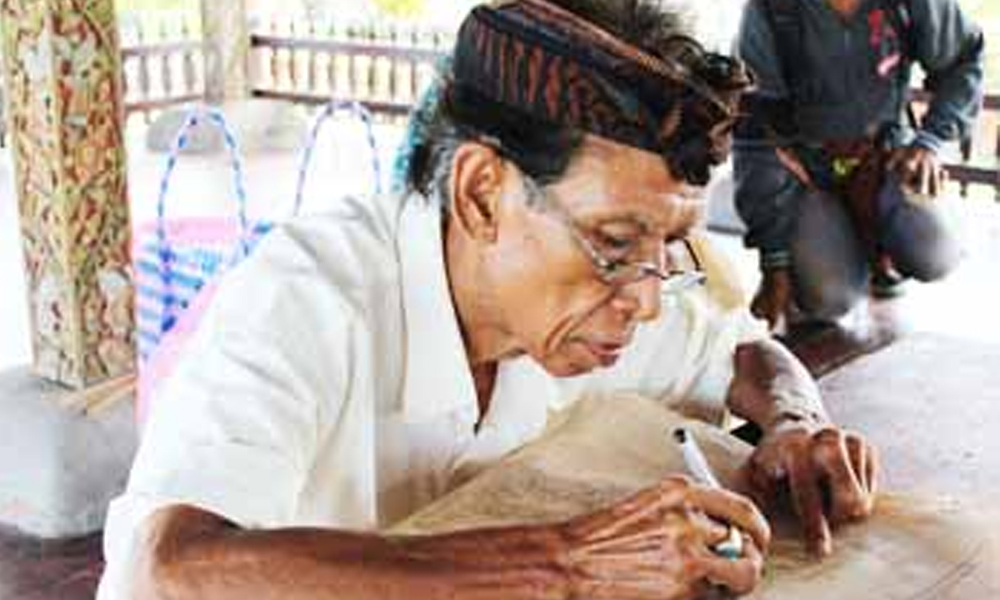INTRIGUED by beautiful ancient heritages, many travelers will make their time to drop in at Kerta Gosa Klungkung. Information read from guide books will give brief explanation about this attraction and it is then completed with the direct visit. It is strategically located in the heart of Semarapura town.
After parking vehicle in front of the market area, visitors will be easy to reach the Kerta Gosa complex. By crossing the road, visitors will meet the counter of admission ticket. When entering the area, visitors will encounter a high rising pavilion in the northeast of the complex known as Kerta Gosa formerly functioned to hold customary court. Actually it is a part of former royal complex of Semarapura Palace established in 1686 during the administration of Dewa Agung Jambe.
Today, the three pairs of carved chair and a table formerly used in the court session are still on display in the pavilion. Aside from offering beautiful Balinese architecture, the ceiling of this pavilion is also embellished with Balinese painting of Kamasan style.
Next to this building stands the Bale Kambang or floating pavilion surrounding by a fish pond with water lilies. Similarly, this building also applies palm fiber as the roof and is wonderfully designed in Balinese architectural style. The entire ceiling is also embellished with puppetry painting of Kamasan style. Kamasan village is a tourism village nearby Kerta Gosa being famous for its classical puppetry painting.
More uniquely, other than seeing many paintings of Kamasan style, visitors can also watch in person the demonstration of this panting starting from the making of sketch to its finishing or coloring. There are at least two painters in charge every day to make the demonstration. According to one of the painters in charge when the Allabali.com makes a visit, the painter can complete a sketch sizing approximately 40 x 60 cm in a day. The theme featured in his painting is Arjuna living as ascetic. Other than using natural colors, he also uses traditionally-made canvas, namely from calico fabric layered with rice porridge to close the pores of the fabric.
He added that the demonstration is handled by Kamasan customary village. Every day, there will be a pair of painters making a demonstration. Each family will get its turn every 30 days. If this painter is not in charge of the demonstration, he usually remains to actively paint at his own studio because he has abundant orders to be accomplished. (allabali.com)










